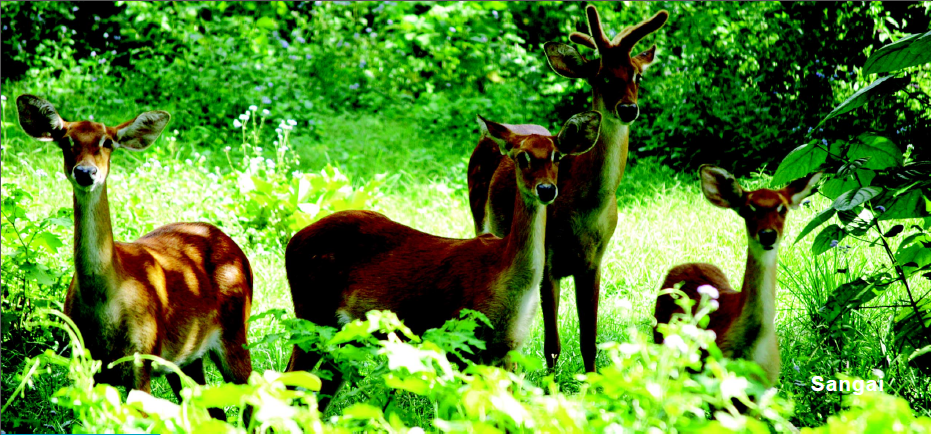Manipur: Flora & Fauna
(→Manipur: Flora & Fauna) |
(→KEIBUL LAMJAO NATIONAL PARK) |
||
| Line 56: | Line 56: | ||
Sangai live on floating mass of decaying aquatic vegetation and are active at dusk and dawn. Besides the endangered Sangai, one gets an opportunity to watch birds also. International visitors are required to obtain special permission to enter into the national park. | Sangai live on floating mass of decaying aquatic vegetation and are active at dusk and dawn. Besides the endangered Sangai, one gets an opportunity to watch birds also. International visitors are required to obtain special permission to enter into the national park. | ||
| − | + | ===Location=== | |
Location: 32 kms from Imphal | Location: 32 kms from Imphal | ||
Revision as of 10:35, 25 January 2014
You can update or correct this page, send photographs and/ or |
Contents |
Manipur: Flora & Fauna
Blessed with an amazing variety of flora and fauna, 67% of the geographical area of Manipur are hill tracts covered with green forests. Churachandpur and Tamenglong districts in particular have vast areas covered with bamboo forests. In a small area of about 22,000 sq. km, Manipur has alpine forests of pines, grasslands and meadows at Dzuko and Shirui, coveted the world over. Some of the most beautiful and precious blooms and orchids abound in their natural habitat spreading their beauty and colour, stunning eyes that are not used to seeing them in such profusion.
There are about 500 varieties of orchids which grow in Manipur of which 472 have been identified.
The Hoolock Gibbon, Slow Loris, Spotted Linshang, Mrs. Hume’s Barbacked pheasant, Blyths Tragopan, Hornbills, etc. form only a small part of the rich natural heritage of Manipur. Nong-in is the State bird of Manipur.
Wildlife parks and sanctuaries: India
KEIBUL LAMJAO NATIONAL PARK
Situated 32 kms from Imphal, the capital of Manipur, Keibul Lamjao is the unique habitat for one of the most endangered deer in the world - the "Sangai". Keibul Lamjao is a part of a wide valley with a number of hillocks surrounded by lakes. Loktak lake the largest freshwater lake in India covering 6475 ha. is designated as a Ramsar site. Loktak lake offers a vast diversity of avifauna. Keibul Lamjao is situated in the southeastern part of the Loktak lake.
Sangai live on floating mass of decaying aquatic vegetation and are active at dusk and dawn. Besides the endangered Sangai, one gets an opportunity to watch birds also. International visitors are required to obtain special permission to enter into the national park.
Location
Location: 32 kms from Imphal
Access: 40 sq. kms.
Best time to visit: December to May
Access
By Air - Imphal (32 km)
By Rail - Dimapur (229 km)
Accommodation
Government Rest House and Tourist Lodge
Contact
A.C.F. Keibul Lamjao National Park Manipur




